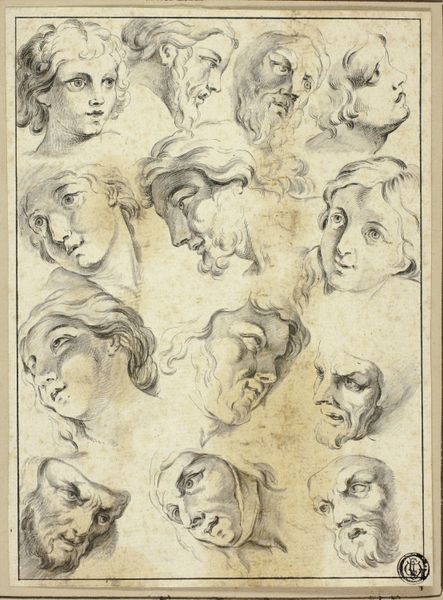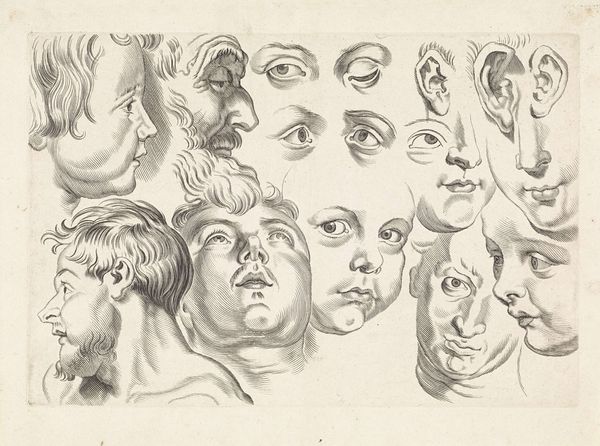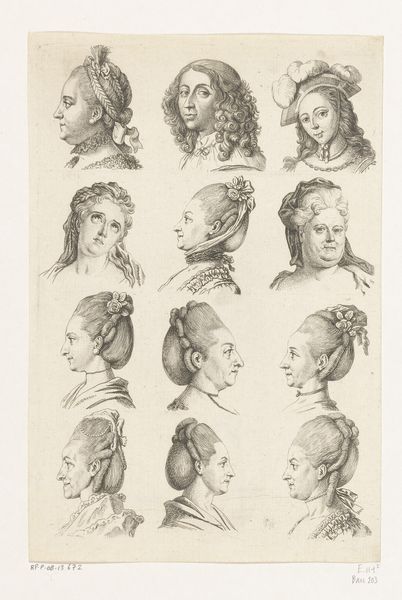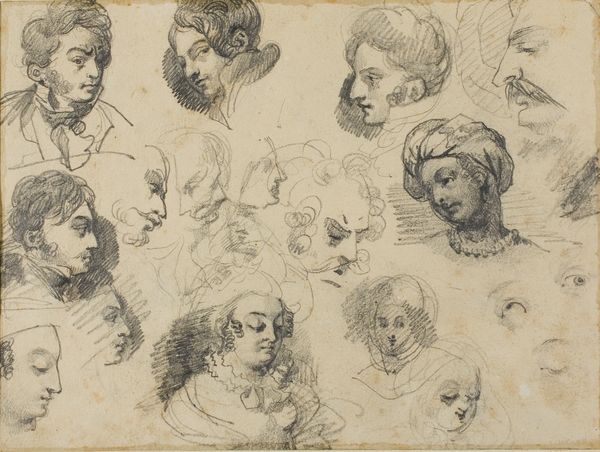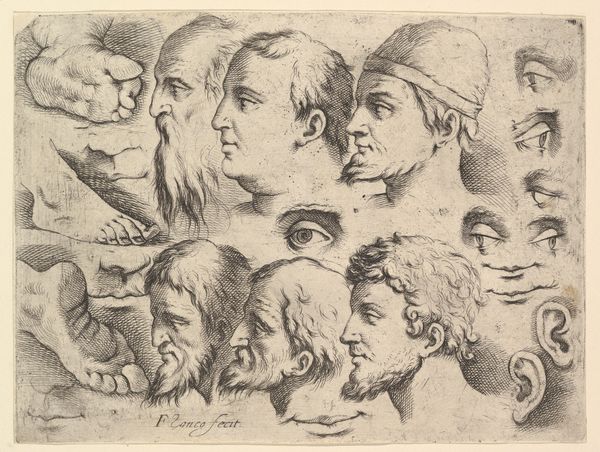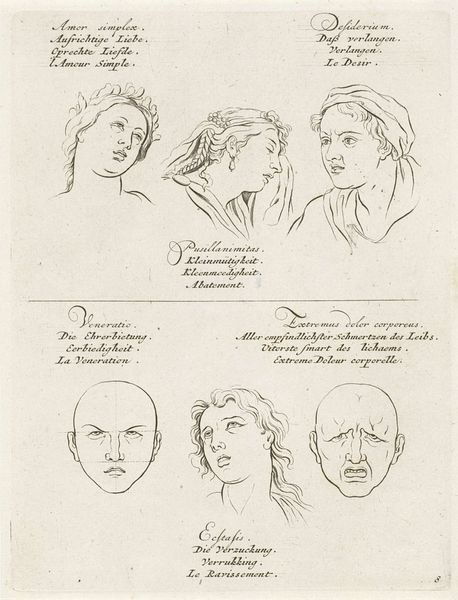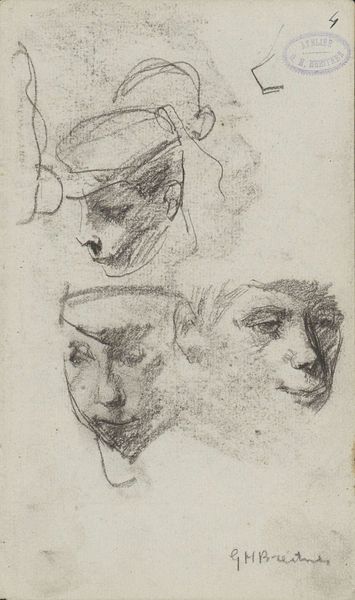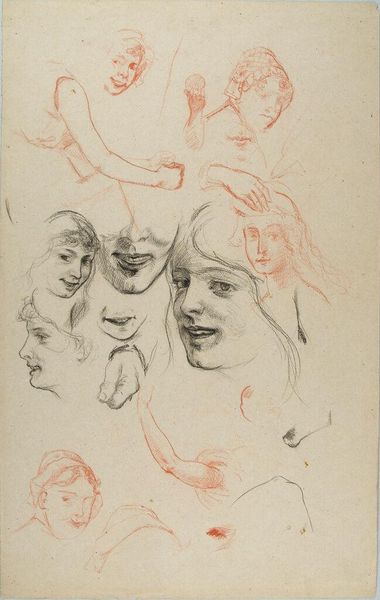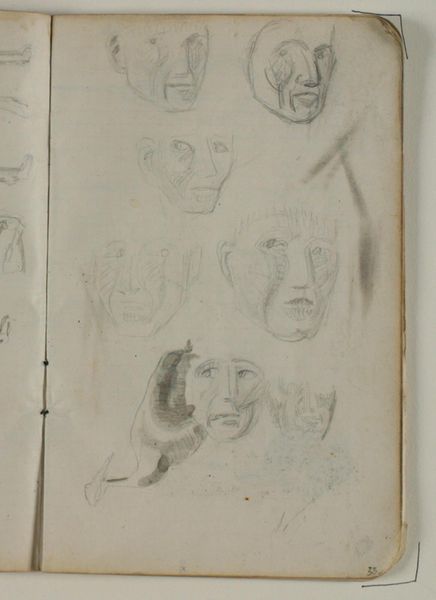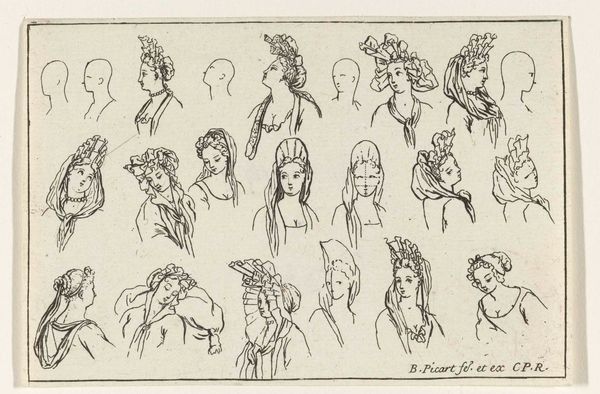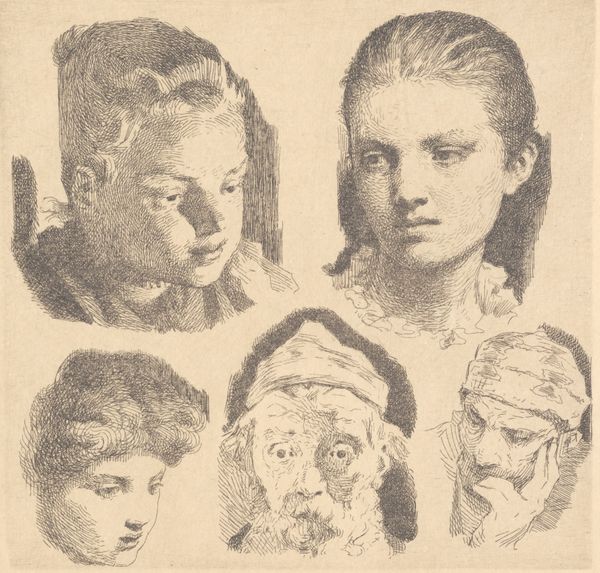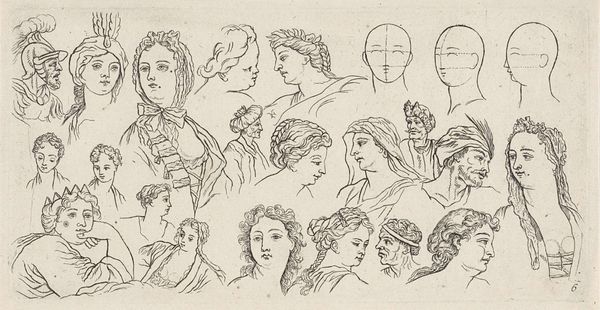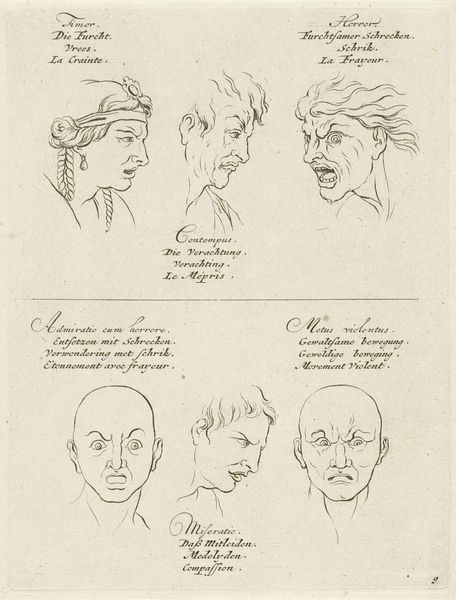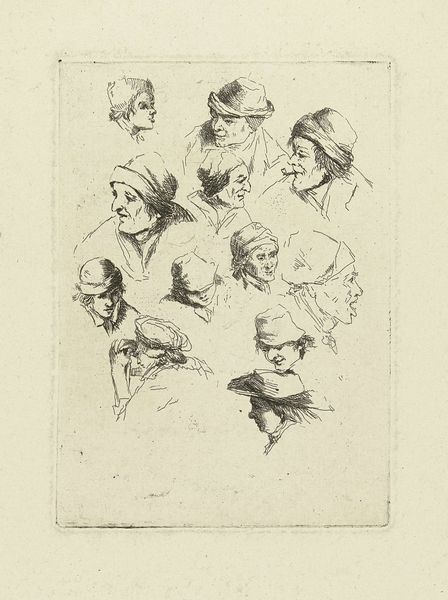
drawing, print
#
portrait
#
drawing
# print
#
caricature
#
pencil sketch
#
figuration
#
line
#
portrait drawing
#
history-painting
#
academic-art
Dimensions: plate: 13 1/16 x 17 3/4 in. (33.1 x 45.1 cm) sheet: 15 3/8 x 21 1/2 in. (39.1 x 54.6 cm)
Copyright: Public Domain
Curator: Looking at this intriguing print entitled "The Expressions," created around 1696 by Henri Testelin, currently residing at the Metropolitan Museum of Art. Twelve faces, each attempting to capture a distinct emotion. Editor: What immediately strikes me is the almost theatrical intensity of these faces. Each one feels exaggerated, almost cartoonish in its display of emotion, yet strangely compelling. The artist has truly captured something visceral. Curator: Absolutely. In its time, this work fulfilled a very didactic role within academic art circles, almost as a visual textbook of emotions, showing young artists how to depict states of mind, in the era's historical paintings. Think about the importance placed on representing heroes with certain countenances! Editor: Indeed! I immediately connect "la Colere"—the anger—to depictions of gods in classical sculptures; this enduring link underscores how expressions have culturally defined roles. What intrigues me are those emotions that aren't immediately clear. Like "L’Inquietude"; is that anxiety? Foreboding? The names invite deeper pondering on our cultural definitions of such concepts. Curator: And in some ways, they seem rather staged. "Le Rire," laughter, looks almost forced and studied rather than genuinely joyful. However, considering this was produced within the French Academy of Painting and Sculpture’s orbit, intended for didactic instruction, perhaps the goal was clarity above realism. These drawings are, therefore, more useful in telling us what French society deemed essential to represent effectively within academic art, reflecting very controlled social codes. Editor: Yet within these constraints, there’s a raw exploration of universal feelings. Look at "Douleur Eque"—excruciating pain. That slumped posture, downturned face is evocative even today, revealing a timeless resonance. The symbols are subtle but communicate volumes; such ability makes it incredibly thought-provoking for anyone interested in visual psychology! Curator: I agree. Ultimately, the work shows us what emotional displays were valorized – or at least, codified – in that period, thereby cementing their status for subsequent generations. The images, in turn, served the needs of larger structures: those of the Academy. Editor: I find it amazing how artworks such as “The Expressions” are not just beautiful artefacts to study. In this case, they become enduring documents of shared experience—revealing deep structures in how we communicate inner lives across centuries.
Comments
No comments
Be the first to comment and join the conversation on the ultimate creative platform.
